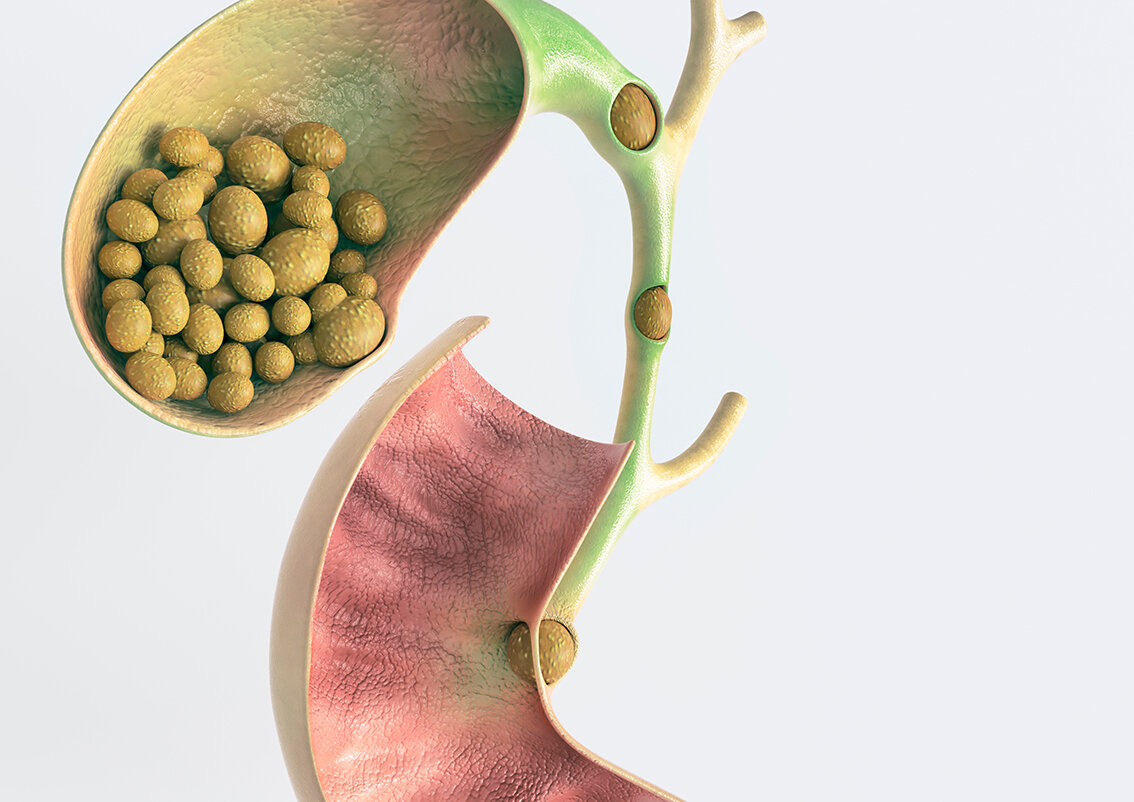Surgery for gallbladder polyps: when scans are not enough
To remove or not to remove gallbladder polyps: that is the question Dr Terence Chua regularly gets asked by patients concerned about the best way to manage gallbladder polyps.
While most types of gallbladder polyps are monitored with ultrasound only, could gallbladder removal surgery be a way to remove the problem of gallbladder polyps altogether? Here we explore issue of surgery for gallbladder polyps to see what Dr Terence Chua recommends.
What causes gallbladder polyps?
Gallbladder polyp visible during ultrasound.
Firstly, let’s understand what a gallbladder polyp is and what causes them. A polyp is an abnormal growth of tissue. They often look like small, flat bumps or can be suspended from tiny stalks.
The most common type of gallbladder polyps are pseudopolyps or cholesterol polyps. These are cholesterol-filled growths that are often caused by high levels of cholesterol in a person’s bile. This type of polyp does not generally cause any symptoms in its early stages but as it evolves may eventually develop into gallstones.
Inflammatory polyps are the second most common cause of all gallbladder polyps caused by inflammation in the wall of the gallbladder. You might be diagnosed with inflammatory polyps if you have experienced biliary colic (gallbladder attacks), acute cholecystitis (gall bladder infection) or related symptoms such as pain after eating. They may be associated with other common sonographic findings such as adenomyomatosis of the gallbladder wall.
The third type of gallbladder polyp, called a true gallbladder polyp, is the type associated with cancer. When these grow larger than 10mm, they are more likely to become cancerous.
Are all gallbladder polyps be linked with cancer?
Gallbladder cancer is a rare form of cancer and most gallbladder polyps are not associated with cancer. However, the size of a polyp can help predict whether it is more likely to be linked with cancer at a later stage. This is one of the main reasons that all gallbladder polyps are monitored closely to detect any signs of growth or abnormal changes. While it is rare, gallbladder cancer is most often diagnosed when the disease has progressed and the outcomes are poorer.
Are scans an effective way to monitor gallbladder polyps?
Once discovered, gallbladder polyps are usually monitored, most commonly by general practitioners, using routine ultrasounds every 6-12 months to monitor for changes. The usual threshold to recommend consultation with a gallbladder surgeon is if a polyp has increased in size by 2mm or more since your last scan or if it is above 5mm in size.
However, on a standard abdominal ultrasound, it can be difficult to accurately identify and measure the size of gallbladder polyps. Often what appears as a grey shadow could either be a gallbladder polyp or gallstones sitting on the lining of the gall bladder. Measuring a 3-dimensional 3D gallbladder polyp using a 2-dimensional 2D ultrasound limits its accuracy. Variations between scans can cause unnecessary worry and concern about whether polyps are changing or how quickly they are growing.
Should I have surgery for gallbladder polyps?
At the end of the day, the only treatment for gallbladder polyps is to remove the gallbladder. And while most gallbladder polyps do not cause any symptoms and are non-cancerous, the constant need for monitoring is stressful for many people. In these cases, Dr Chua believes that removing the gallbladder can be a better option.
For example, if you are likely to feel anxious about the need to have regular diagnostic tests – or worry about undetected changes in between scans – having the gallbladder removed surgically takes away both the physical and psychological cause for concern.
Repeated ultrasound examinations are also more costly over the long term as compared to undergoing a safe keyhole operation to remove the gall bladder.
Today, surgery to remove the gallbladder (cholecystectomy) is considered a safe and non-invasive. Removing the gallbladder using keyhole (laparoscopic) surgery involves four tiny incisions and requires minimal recovery time. Read more about laparoscopic gallbladder removal surgery with General Surgeon Dr Terence Chua.
If you’ve been diagnosed with gallbladder polyps and would like to explore your options for gallbladder removal surgery Brisbane or gallbladder removal surgery Gold Coast, contact General Surgeon Dr Terence Chua.
Book an appointment with general surgeon Dr Terence Chua in Brisbane & the Gold Coast.
Dr Terence Chua consults and operates across Brisbane and the Gold Coast. See consulting locations for Dr Terence Chua.



